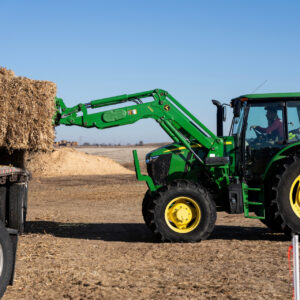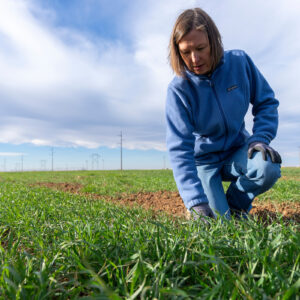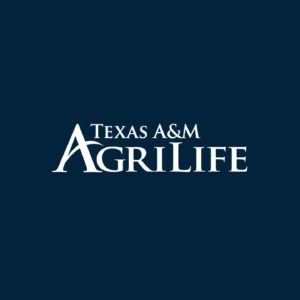TITLE:
Cotton Herbicide Effects on Dryland Re-Plant Sorghum at AG-CARES, Lamesa, TX, 2000
AUTHOR:
Calvin Trostle & Jim Barber, Sorghum PROFIT, TAEX-Lubbock; Wayne Keeling & Danny Carmichael, TAES-Lubbock. c-trostle@tamu.edu, (806) 746-6101
METHODS AND PROCEDURES (for guar planting):
Soil Type: Amarillo fine sandy loam
Re-Planting: July 7, 2000, 40” rows, Cargill 637
Previous Crop: Cotton
Seeding Rate: ~32,000 seeds/acre with vacuum planter (~2.0 lbs./acre)
Plot Set-up: Six buster planting strips, 8 rows by 350’; herbicide treatment overlay in four replicated plots
Harvest Area: Drought loss on all treatments
Fertilizer: None
Herbicide: None
Insecticide: None
Rainfall: See Lamesa area summary elsewhere in the AG-CARES report
Date Harvested: None
RESULTS AND DISCUSSION:
No harvestable yield was obtained in 2000 due to drought.
When cotton fails due to either wind or hail damage, the cotton herbicide used has an impact on a sorghum catch crop planted with a buster planter. We seek to evaluate the injury level and yields of sorghum after various chemical and buster planting treatments. Pre-emerge cotton herbicides were applied in 2000 ahead of planting sorghum with a) no buster planting, b) “half” buster planting, and c) deep planting of sorghum.
The following herbicides were applied about four weeks ahead of buster planting: Caparol, Karmex, Cotoran, Command, Staple (full rate), Caporal + Staple (1/2 rates), and a control. No rain was received to incorporate these herbicides. Sorghum was planted in early July, but emergence or subsequent stand was due to both herbicide and drought. Six-week injury ratings on sorghum were inconclusive, and we do not believe the results are indicative of what a farmer may expect in a more normal year. The fact that the “injury and stand” score in the attached table below is higher for buster planting suggests that the reduction in growth might have been due to lower moisture level or some other factor rather than the herbicide itself.
The study will be expanded in 2001 to include preplant Prowl and Treflan and use a regular buster planter and will also be repeated at Lubbock and Halfway.
Table 1. Summary of sorghum re-plant treatments into cotton herbicides at AGCARES, Lamesa, 2000. The injury and stand score may reflect drought conditions and atypical herbicide movement or activity.
| Buster | ||||
| Planting | Rate of | Plants | Injury & Stand | |
| Treatment^ | Cotton Herbicide | Application | per Acre | Score* |
| — Lbs. ai/A — | ||||
| No Bust | Caparol | 1.2 | 21500 | 1.3 |
| Half Bust | Caparol | 1.2 | 11250 | 3.3 |
| Full Bust | Caparol | 1.2 | 15500 | 3.0 |
| No Bust | Staple | 0.063 | 24500 | 2.0 |
| Half Bust | Staple | 0.063 | 19500 | 2.0 |
| Full Bust | Staple | 0.063 | 27500 | 2.5 |
| No Bust | Cotoran | 1.0 | 22250 | 1.0 |
| Half Bust | Cotoran | 1.0 | 19250 | 2.5 |
| Full Bust | Cotoran | 1.0 | 20750 | 2.8 |
| No Bust | Caparol + 1/2 Staple | 1.2 + 0.032 | 21000 | 2.0 |
| Half Bust | Caparol + 1/2 Staple | 1.2 + 0.033 | 14250 | 3.5 |
| Full Bust | Caparol + 1/2 Staple | 1.2 + 0.034 | 20000 | 3.0 |
| No Bust | Command | 0.75 | 20000 | 1.8 |
| Half Bust | Command | 0.75 | 15750 | 3.0 |
| Full Bust | Command | 0.75 | 23750 | 3.3 |
| No Bust | Karmex | 2.8 | 19000 | 2.0 |
| Half Bust | Karmex | 2.8 | 11750 | 3.0 |
| Full Bust | Karmex | 2.8 | 12500 | 3.5 |
| No Bust | Untreated Check | none | 21500 | 1.0 |
| Half Bust | Untreated Check | none | 25000 | 1.0 |
| Full Bust | Untreated Check | none | 30250 | 1.3 |
| No Bust | All Herbicides | — | 21400 | 1.7 |
| Half Bust | All Herbicides | — | 15300 | 2.9 |
| Full Bust | All Herbicides | — | 20000 | 3.0 |
^ Sorghum was planted with the following: no buster planting (into top of bed); ‘half bust,’ resulting in nearly flat surface (~4″ soil moved); ‘full bust,’ planted as deep as we could get while still covering seed with adequate soil (~8″ of bed removed).
*Rating: 1 = no damage, 5 = dead





